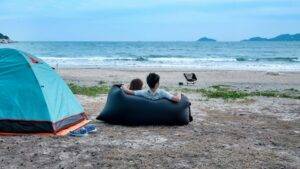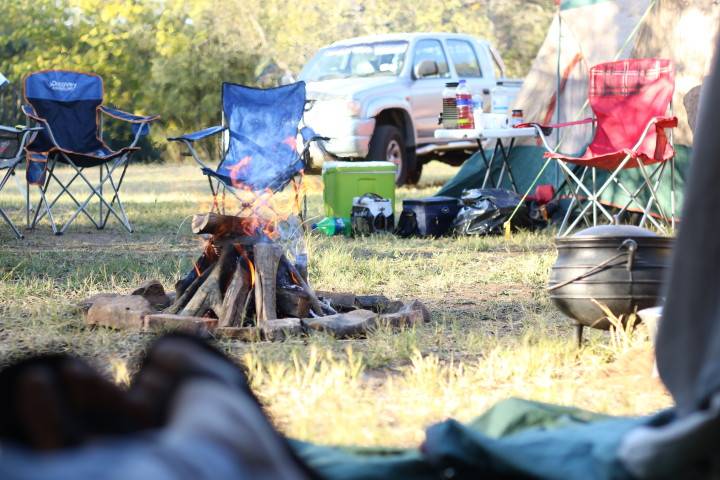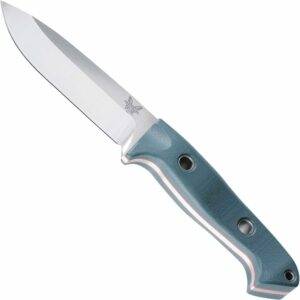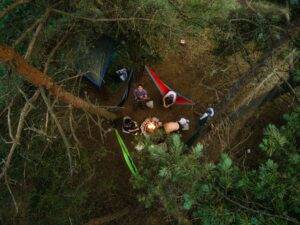Camping has become increasingly popular in recent years as people seek to disconnect from their busy lives and reconnect with nature. Spending time outdoors has numerous benefits, including reducing stress, improving mental health, and increasing physical activity. For beginners who are planning their first camping trip, it can be overwhelming to know where to start. That’s why we have created this comprehensive guide to help you navigate the world of camping and ensure that your first experience is a successful and enjoyable one.
Choosing the Right Tent: A Beginner’s Guide
One of the most important aspects of camping is having a reliable and comfortable shelter. When choosing a tent, there are several factors to consider. First, you need to decide what type of tent is best suited for your needs. There are several options available, including dome tents, cabin tents, and backpacking tents. Each type has its own pros and cons, so it’s important to do your research and choose the one that best fits your camping style.
Once you’ve decided on the type of tent, you’ll need to consider the size and shape. Tents come in various sizes, ranging from one-person tents to family-sized tents. It’s important to choose a tent that provides enough space for you and your camping companions, as well as your gear. Additionally, consider the shape of the tent. Dome-shaped tents are generally more stable in windy conditions, while cabin-style tents offer more headroom and space.
Setting up and maintaining your tent is also crucial for a successful camping trip. Before heading out, practice setting up your tent at home to familiarize yourself with the process. Make sure you have all the necessary equipment, such as stakes and guylines. Once at the campsite, choose a level and clear area to set up your tent. Be mindful of any potential hazards, such as rocks or tree branches. Finally, take care of your tent by keeping it clean and dry. This will help prolong its lifespan and ensure that it remains in good condition for future trips.
Sleeping Bags and Pads: How to Stay Warm and Comfortable
A good night’s sleep is essential for an enjoyable camping trip, and choosing the right sleeping bag and pad can make all the difference. When selecting a sleeping bag, consider the weather conditions you’ll be camping in. Sleeping bags are rated for different temperature ranges, so choose one that is appropriate for the lowest temperature you expect to encounter. Additionally, consider the type of insulation used in the sleeping bag. Down insulation offers excellent warmth-to-weight ratio but can lose its insulating properties when wet. Synthetic insulation, on the other hand, retains its warmth even when damp.
In addition to a sleeping bag, a sleeping pad is essential for comfort and insulation from the cold ground. There are several types of sleeping pads available, including foam pads, self-inflating pads, and air pads. Foam pads are lightweight and durable but offer minimal cushioning. Self-inflating pads provide a good balance between comfort and weight but can be bulkier to pack. Air pads are lightweight and comfortable but require inflation and can be punctured if not handled carefully.
To stay warm and comfortable while sleeping outdoors, there are a few additional tips to keep in mind. First, make sure to insulate yourself from the ground by using a groundsheet or tarp underneath your tent. This will help prevent heat loss through conduction. Additionally, wear warm clothing and socks to bed, as well as a hat to keep your head warm. Finally, consider using a sleeping bag liner for added warmth and cleanliness.

Camp Stoves and Cookware: Essential Gear for Cooking in the Great Outdoors
One of the joys of camping is cooking and enjoying meals in nature. To do so, you’ll need a reliable camp stove and cookware. There are several types of camp stoves available, including propane stoves, liquid fuel stoves, and wood-burning stoves. Propane stoves are easy to use and provide consistent heat but require carrying fuel canisters. Liquid fuel stoves are versatile and can burn a variety of fuels but require more maintenance. Wood-burning stoves are environmentally friendly and don’t require carrying fuel but can be slower to cook with.
When choosing cookware for camping, consider the size and weight of the pots and pans. Lightweight and compact cookware is ideal for backpacking trips, while larger and heavier cookware may be suitable for car camping. Additionally, look for cookware that is durable and easy to clean. Non-stick coatings can make cleaning up a breeze, while stainless steel is known for its durability.
When cooking in the great outdoors, it’s important to follow proper safety precautions. Always cook in a well-ventilated area to prevent carbon monoxide poisoning. Keep flammable materials away from the stove and never leave it unattended while in use. Use pot holders or oven mitts to handle hot cookware, and be mindful of the wind when lighting the stove. Finally, clean up after yourself by properly disposing of food waste and washing your cookware.
Water Filtration and Purification: Staying Hydrated on Your Camping Trip
Staying hydrated is crucial while camping, as outdoor activities can be physically demanding and lead to increased water loss through sweat. However, not all water sources in nature are safe to drink from. That’s why it’s important to have proper water filtration and purification methods in place.
There are several types of water filtration and purification methods available, each with its own pros and cons. Water filters remove bacteria, protozoa, and some viruses from the water by physically straining them out. They are lightweight and easy to use but may not remove all types of contaminants. Water purifiers, on the other hand, use chemicals or UV light to kill or inactivate microorganisms. They are effective against a wide range of pathogens but may add an unpleasant taste to the water.
To stay safe and healthy while drinking water from natural sources, follow these tips. First, always assume that untreated water is contaminated and should be treated before consumption. If using a water filter, read the instructions carefully and follow the recommended maintenance procedures. If using a water purifier, make sure to use the correct dosage and allow enough contact time for the chemicals or UV light to work. Finally, consider carrying a backup method of water treatment, such as water purification tablets or a portable UV light.
Lighting and Navigation: Tools for Safety and Convenience
Having proper lighting and navigation tools is essential for a safe and enjoyable camping trip. When it comes to lighting, there are several options available, including flashlights, headlamps, lanterns, and campfires. Flashlights and headlamps are portable and provide focused light but may have limited battery life. Lanterns provide ambient light and can be hung inside your tent or around the campsite but can be bulky to pack. Campfires not only provide light but also warmth and a cozy atmosphere but require proper fire safety precautions.
For navigation, a compass and map are essential tools to have on hand. Familiarize yourself with how to use a compass and read a map before heading out on your camping trip. Additionally, consider bringing a GPS device or smartphone with GPS capabilities as a backup navigation tool. However, keep in mind that electronic devices may not always be reliable in remote areas or when the battery dies.
To stay safe and find your way in the dark, follow these tips. Always carry a reliable light source with you, such as a flashlight or headlamp, even if you don’t anticipate being out after dark. Make sure to bring extra batteries or a portable charger to keep your devices powered. If using a campfire for lighting, be mindful of fire safety and never leave it unattended. Finally, familiarize yourself with the area and any potential hazards or landmarks before setting out on a hike or exploration.
Backpacks and Daypacks: How to Choose the Right Pack for Your Needs
Having a comfortable and well-fitting backpack or daypack is crucial for carrying your gear while camping. When choosing a backpack, consider the type of camping you’ll be doing. If you’ll be backpacking and carrying all your gear on your back, a backpacking pack is the best option. These packs are designed to distribute weight evenly and have features such as adjustable suspension systems and padded hip belts for added comfort. If you’ll be car camping and only need to carry your gear short distances, a larger backpack or duffel bag may be suitable.
In addition to size, consider the style of the pack. There are several types of backpacks available, including top-loading packs, panel-loading packs, and hybrid packs. Top-loading packs are simple and durable but can be more difficult to access items at the bottom of the pack. Panel-loading packs have a zippered panel that allows easy access to all your gear but may not be as durable as top-loading packs. Hybrid packs combine the features of both top-loading and panel-loading packs for added convenience.
When packing your backpack, it’s important to distribute weight evenly and pack items in a logical order. Place heavier items closer to your back and towards the bottom of the pack to maintain balance. Pack frequently used items in easily accessible pockets or compartments. Use compression straps to secure your load and prevent shifting while hiking. Finally, make sure to adjust the straps and hip belt for a comfortable fit and distribute weight evenly across your shoulders and hips.
Clothing and Footwear: Dressing for Success in the Outdoors
Choosing the right clothing and footwear is essential for staying comfortable and protected while camping. When it comes to clothing, consider the weather conditions you’ll be camping in and dress in layers. Layering allows you to adjust your clothing to regulate body temperature as conditions change throughout the day. Start with a base layer made of moisture-wicking material to keep you dry and comfortable. Add a mid-layer for insulation and a outer layer for protection against wind and rain.
In addition to layers, consider the type of fabric used in your clothing. Synthetic fabrics such as polyester and nylon are lightweight, quick-drying, and moisture-wicking, making them ideal for outdoor activities. Merino wool is another popular choice as it is naturally odor-resistant, insulating, and moisture-wicking. Avoid cotton clothing as it retains moisture and can lead to hypothermia in cold and wet conditions.
When it comes to footwear, choose shoes or boots that are appropriate for the terrain you’ll be camping in. Hiking boots are ideal for rugged trails and provide ankle support and traction. Trail running shoes are lightweight and flexible, making them suitable for less technical terrain. Sandals or water shoes are a good option for camping near water or in hot weather. Whichever footwear you choose, make sure they are broken in before your camping trip to prevent blisters and discomfort.
To stay comfortable and protected while camping, follow these tips. Always carry a waterproof jacket or rain poncho to protect against unexpected rain showers. Wear a hat to protect your head from the sun and keep warm in cold weather. Use sunscreen to protect your skin from harmful UV rays, even on cloudy days. Finally, bring extra socks to keep your feet dry and prevent blisters.
First Aid and Emergency Gear: Being Prepared for the Unexpected
Being prepared for emergencies is crucial when camping in remote areas. Having proper first aid and emergency gear on hand can make all the difference in a potentially dangerous situation. A basic first aid kit should include items such as adhesive bandages, gauze pads, antiseptic wipes, tweezers, and pain relievers. Additionally, consider including items such as a whistle, emergency blanket, and a multi-tool in your kit.
In addition to a first aid kit, it’s important to have a plan in case of emergencies. Familiarize yourself with the location of the nearest hospital or medical facility before heading out on your camping trip. Share your itinerary with a trusted friend or family member and let them know when you expect to return. Consider carrying a personal locator beacon or satellite messenger for added safety and peace of mind.
To stay safe and prepared for emergencies while camping, follow these tips. Always carry your first aid kit with you and know how to use its contents. Take a first aid and CPR course to learn essential life-saving skills. Be aware of potential hazards in your surroundings and take appropriate precautions. Finally, trust your instincts and make decisions that prioritize your safety and the safety of others.
Tips for Packing and Organizing Your Gear: Maximizing Space and Efficiency
Packing and organizing your gear efficiently is essential for maximizing space and ensuring that you have everything you need for your camping trip. Start by making a checklist of all the items you’ll need, including clothing, food, cooking equipment, and personal items. This will help you stay organized and ensure that you don’t forget anything important.
When packing your gear, consider the weight and size of each item. Place heavier items towards the bottom of your backpack or at the center of your car trunk to maintain balance. Use compression sacks or packing cubes to condense clothing and maximize space. Roll clothing instead of folding it to save space and prevent wrinkles. Finally, use carabiners or gear loops to attach items such as water bottles or hiking poles to the outside of your backpack for easy access.
In addition to packing efficiently, it’s important to minimize your impact on the environment while camping. Follow Leave No Trace principles, which include packing out all trash, disposing of waste properly, and leaving natural and cultural artifacts undisturbed. Respect wildlife by observing from a distance and not feeding or approaching them. Finally, be mindful of noise levels and respect quiet hours to preserve the tranquility of the natural environment.
Planning your first camping trip can be overwhelming, but with the right information and preparation, it can be a rewarding and enjoyable experience. In this comprehensive guide, we have covered everything from choosing the right tent and sleeping gear to packing and organizing your gear efficiently. We have also discussed the importance of staying hydrated, having proper lighting and navigation tools, dressing appropriately for the outdoors, and being prepared for emergencies.
Remember to have fun and enjoy your camping trip while being responsible and respectful of nature. Take the time to appreciate the beauty of the natural world and disconnect from the stresses of everyday life. By following the tips and advice provided in this guide, you’ll be well-equipped to plan a successful and memorable camping trip. So grab your gear, head outdoors, and start exploring all that nature has to offer. Happy camping!




